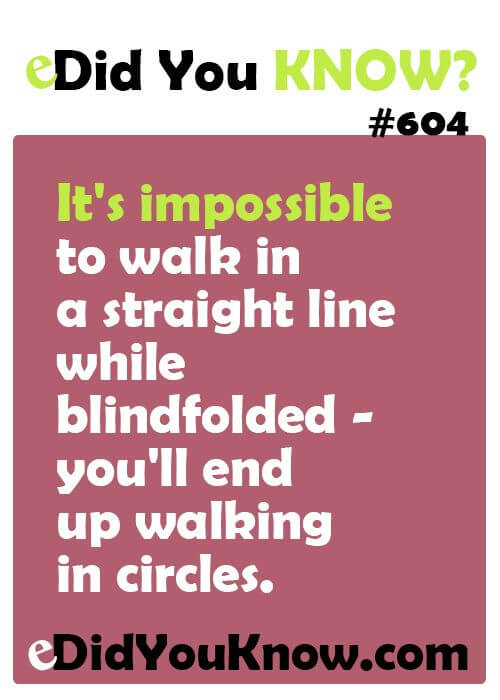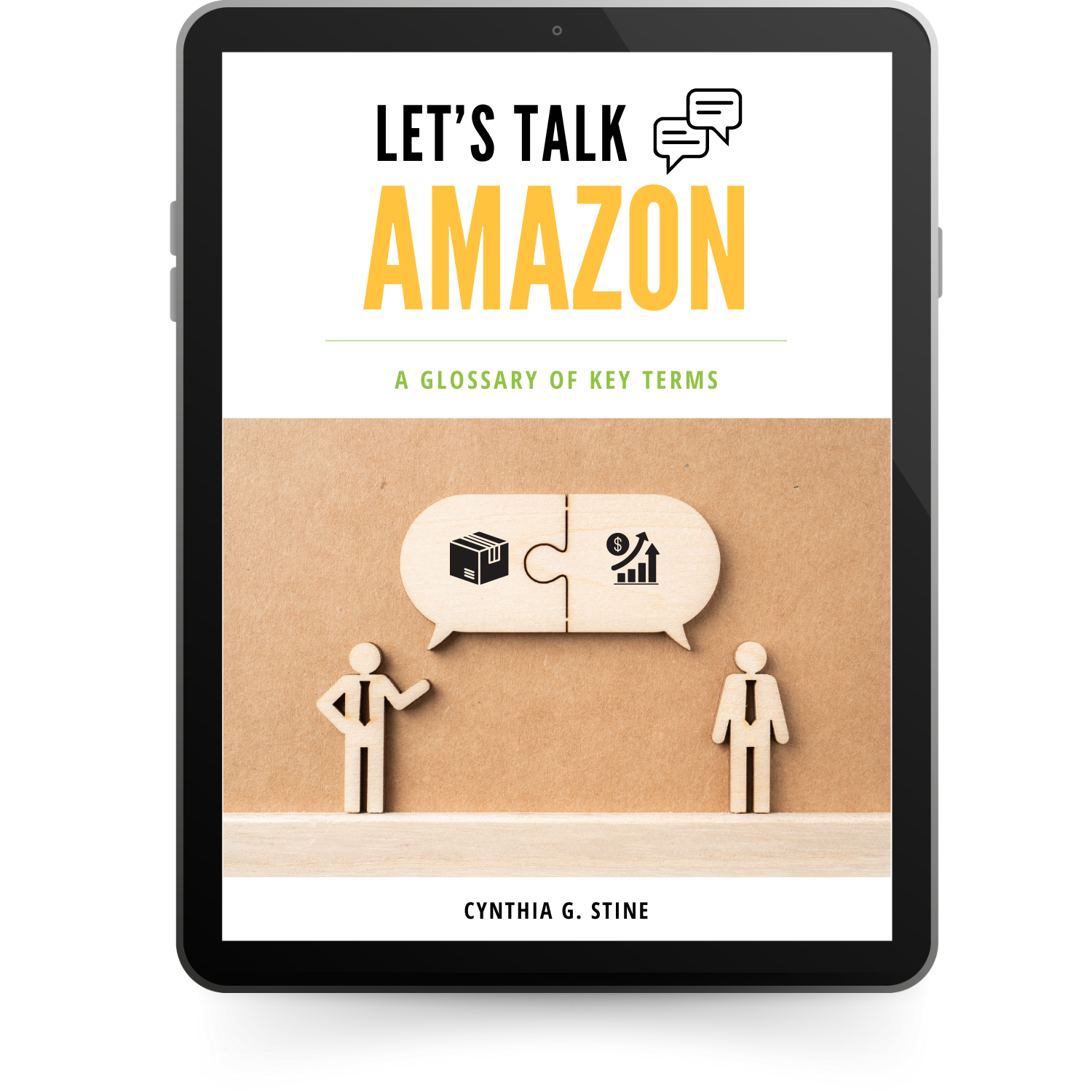 I love teaching classes not only because I get to meet my readers in person, but because I learn something too. I find it so interesting how people think and how they approach their businesses. We are all doing the same basic things yet everyone’s business is so very different.
I love teaching classes not only because I get to meet my readers in person, but because I learn something too. I find it so interesting how people think and how they approach their businesses. We are all doing the same basic things yet everyone’s business is so very different.
A lot of folks over the years have said to me, “I can’t find any inventory.” I’ve learned that they mean a lot of different things by that. It may be that they can’t find inventory according to a certain criteria which means I look at their criteria with them. Or it might mean that all the opportunities they are finding are saturated with other sellers which means I look at other places for them to find inventory. It might also mean that they have limited themselves to only a few categories and that if they stretch themselves they will find lots of new opportunities in the same stores. It may also mean that they are not scanning enough or spending enough time in a store. The list goes on and on which is why it can be helpful to have someone from the outside look at what you are doing.
During my last book sale class, I realized that there was something else going on as well. Before entering the big sale we had all discussed criteria, condition, the need to scan all kinds of books, etc., and yet some of the students were still having trouble. They were all working the same big table (spread apart) and should have been picking up roughly the same amount of books, but they weren’t. When I would come to help them individually, I would pull books and say “did you try this one?” and many of those cherry picks turned out to be good books.
Obviously I have a lot more experience which helps, but I realized they were also suffering from inventory blindness. The opportunities were right in front of them. As I helped them see the inventory around them, it dawned on me that the problem many sellers have isn’t finding inventory, it is seeing it. It doesn’t matter if you are looking for used books, groceries or toys, inventory blindness can cripple your business if not corrected.
Inventory blindness is about not being able to see the possibilities with something you scan. Even if you have very high criteria you should be able to find good inventory to sell. One of the most successful online sellers I know won’t send up something unless she can price it for $25 and up. It is not worth her time and she has plenty of inventory that fits her criteria. A major online bookseller only sends up books he can sell for $10 and up and still walks away with hundreds of books from most book sales. So how do you reverse inventory blindness?
- Scan everything
- Discount the lowest price
- Go where the other sellers aren’t
- Don’t compete against merchant sellers
- Carve out a specialty
- Replenish
- Don’t let your technology think for you
- Know when to break your own rules
- Stop thinking about yourself
- Understand your customer
Scan Everything
As I watch people scan during my classes I see them cherry pick. While certainly some items are obviously not good candidates (tatty old books, appliances with damaged boxes for example), many that they are passing up are. When you are a new seller you must scan a lot! If you only scan 50 or 100 items, don’t be shocked if you only find 5 or 10 items to sell…if that many. Some sellers are very methodical about it. They work their way through a certain section of a store or book sale diligently over time until they’ve scanned nearly everything there. This helps them shorten their scanning time in the future as they avoid past losers and focus on the new stuff. There is NO WAY to shorten this particular learning curve. While be-on-the-lookouts (BOLOs) and tips from Facebook groups can be fun and helpful, you can’t build a business on them. There is no substitute for personal experience. Scan a lot.
Discount The Lowest Price
A lot of emphasis is placed on the Amazon Buyer’s Box. And while it is true that 70% of buyers purchase directly from the buyer’s box, the fact is the buyer’s box changes minute-by-minute. If you put down an item because there is some nut selling it for $4, you may be missing out on a great opportunity. In the week or two that it will likely take you to get your item to the Amazon warehouse, that lowballer’s item may well be gone. Now the buy box may be much higher again. What I do is look and see if I would be happy with the second or third price on list (or somewhere in between). If so, then I’ll consider buying it.
Notice I said “consider.” Now I have to think about how quickly I think the item will sell and how long I’m willing to wait. For books that cost me 2 cents a month to store at Amazon, I’m much more patient than a huge, heavy toy. In addition, I have to consider the category. A 100,000 in books is very different than a 100,000 in grocery in terms of sales velocity and total numbers sold per day (100,000 in books is faster). Lastly, I have to think about the quantity that lowballer might have. With used books I can be reasonably certain that another seller only has 1 or 2 units and I don’t worry about it. With toys, it could be hundreds. If I think the item is worth the trouble, I might try testing a bit. I start to make a pretend purchase of 100 units of the lowballer’s stuff. Amazon will tell me right away if that seller has enough units or not. This is for something that is worth the trouble. Some little $5 action figure I’m flipping for $15 is not usually worth that kind of trouble and I’ll walk away if there are more than one or two other FBA sellers.
What if there are multiple lowball sellers? I will usually pass if there are more than two lowballers unless the rank is super-low and I know they are selling lots of units a day. If the rank is high (around 1 million or higher in books), then I may not tolerate any lowballers. These are my personal criteria. While yours may be different, just realize that one or two lowball sellers aren’t necessarily a reason to turn away inventory.
Go Where The Other Sellers Aren’t
I sell very few new toys at Christmas time anymore. It isn’t because I can’t find good inventory, it is because it is such a competitive category. Something that looks great when you buy it can be a loser by the time it gets to the warehouse. If I sell toys now they are either collectibles which means – like books – the other sellers only have one or two units or no one else is selling them FBA. Even then I might not buy them. There are other sellers who love toys and do very well by them (like my Dad), but I prefer to go where others aren’t. There are lots of non-toy items that sell at Xmas that aren’t so saturated with other FBA sellers. Also, while I like to train people at Target, BigLots and Walmart, the fact is my best sources of new inventory tend to be smaller, regional discount stores. Or, I shop the big boys but a different section that many others do. When I go to a book sale, I have certain sections that I like and I’ll start where there are fewer other shoppers. It is fine to compete against other FBA sellers and I do it every day, but if your inventory isn’t selling as well as you like, you may want to look around for less competitive items/categories. Don’t buy a toy that already has 20 FBA sellers, for example.
Don’t Compete Against Merchant Sellers
I see this problem often. You are not competing directly against merchant sellers. You are competing against other FBA sellers and Amazon itself. Remember that. Your customer wants free 2-day shipping and the guarantee of Amazon’s customer service behind their purchase. In addition, they want an easy exchange after Christmas if the person doesn’t like the gift. With a merchant seller all your gift-ee gets is either a refund or the opportunity to exchange for something else the merchant sells. With FBA, they can exchange their gift for anything sold by Amazon (or us). So, if the merchant is selling for $19.99 and you want to charge $25…charge $25. If there is one lowball merchant and a bunch of higher priced ones, ignore the lowballer. Does this mean you should never look at the merchant sellers? No, there is some common sense required. If there is a huge difference between your price and the merchant’s, potential customers might be willing to wait a few extra days after all for their stuff. However, if Amazon is charging higher and the other FBA sellers are charging higher, that’s what you should look at first. They are your real competition. If you are looking at an item to sell and there are no FBA sellers then the merchant price can be a starting point, but don’t be limited by their price. If the merchant is selling a book for $5.00, for example, you can easily charge $9.99 for the same book – and get it.
Carve Out A Specialty
With retail arbitrage almost anything that fits your margin criteria can be sold which is both wonderful and exhausting. It can lead to the idea that you have to scan the whole store which is daunting and can take a long time. What I suggest you do in the beginning is think about areas where you already have expertise or at least an interest and focus on them. Really get to know the categories you choose. It will make your shopping easier and easier over time and it will broaden your mind to the possibilities. The first time I sold a 25-cent paperback for $65.00 I knew books were going to be part of my business for the long haul. Naturally, I wanted to duplicate that experience so I examined other books by the same publisher to see if they were valuable too…and they were. So now I keep an eye out for these particular books when I shop. I’m the same way about cookbooks, textbooks, self-help and religion. I have several great performers in these categories that I can pick up at nearly any book sale and I search them out right away. Knowing a particular area well means you can see opportunities that others may not realize and jump on them. I’ve been doing this a while so I have several specialty categories in books and retail arbitrage. As you get more experienced, it will seem as if inventory is falling into your cart by itself. Your pattern recognition of what makes a good deal will be highly refined and shopping will easier, I swear. By going deep rather than wide, you can shorten that learning curve.
Replenish
There are two seller behaviors that really make me scratch my head – those who only buy a few of a really good deal and those who won’t replenish when something sells. I’m often asked “how many should I buy?” when we find something good during a class. I tell them “all you can afford.” There are several reasons for this: 1) you remove the inventory from the shelves stopping others from buying it; 2) it may not be here later; 3) if it sells well you want all of it; and 4) you can usually return it. Just because you buy 20 doesn’t mean you have to send them all in at once, either. You can send in some and then replenish when they sell. If they don’t sell or there are suddenly a lot of lowballers, then return the items and buy something else. If what you are buying is something that is a regularly stocked item (vs a sale or a one-time overstock), then hot dog! You’ve got a replenishable. When you run low, go to the store and buy more. Very quickly you’ll get a sense for often the item sells and how many you’ll want to send in for a one-month supply. Your goal as a seller is to fill your product portfolio with replenishables so you don’t have to work so hard searching for new stuff all the time.
Even if you are a used book seller you have replenishables. As I noted earlier, I always take a quick scan through some of my favorite categories of books at a book sale and pick up my regular sellers even if I don’t have time to scan deeply. Then I go to the category I want to scan deeply first.
Don’t Let Your Technology Think For You
I used to be an ASellerTool customer and while it had its advantages, the biggest problem I saw with it was that it created dependency on the technology instead of thinking for myself. The idea is you program your criteria in and scan like a lunatic. The program tells you when you hit something that fits your criteria. You fly through the shelves. Awesome, right? The problem is there isn’t any way to truly program in all your criteria. You could miss out on good books because of one lowball seller. If you set your criteria at 500,000 and a book scans at 500,001 then it is ignored by the technology which means you might miss out on a great deal because of a fairly arbitrary line in the sand. The database was limited by the memory in the PDA (at that time) so sometimes you missed out on stuff because it wasn’t in the database. I could go on and on*.
One student of mine used ProfitBandit and loved how she could put in what she was going to pay and see what her profit is. Not a bad thing at all except she was doing this for every item she scanned! It took her forever to find inventory because her process is so slow. Ideally, you would only go into depth for a product that is a hot candidate and quickly eliminate the rest without a lot of key strokes. You want to get to the “no” as quickly as possible so you can race through to the “yes.”
Some folks don’t use a Scanfob or other Bluetooth scanner for scanning and instead rely on their phone cameras. If that is all you can afford at the moment, fine, but then you must be committed to spending a lot more time scanning until you sell enough to afford a Bluetooth scanner. In short, if your technology is slowing you down, find something that makes you faster. It makes a real difference in your ability to find sellable inventory.
Whatever solution you use, you have to be able to make a quick but effective decision. Let it be a tool but not the thinker in your relationship. When I find a strong candidate, I will spend the time to really examine it and probably click thru to Amazon to see all the other offers, and I let my technology help me speed through the obvious bad deals.
A friend of mine assumes that she can raise her toy prices around Christmas time. When she looks at her scanner and sees the current prices, she thinks about what she will actually charge for that product. While that deal may not look so great on the scanner, at a higher price it is a great deal. She is an experienced seller and is more often right than not. She will buy deals that others put down because she knows the potential for that item. She understands trends and perceived consumer value – all things you can’t get from scanning technology.
Know When To Break Your Rules
A lot of times when I talk to other sellers I realize that they are frustrated because there aren’t precise rules. They want their business to be a clear equation of: Rule1+Rule2=FBA Success. I encourage everyone to make their own rules because they help streamline your process. You can’t scan everything in a store or book sale and you can’t buy everything there is for sale (unless you have a huge line of credit) so how do you decide what to do? That’s what personal rules are all about. They are guidelines that help you decide which inventory is worth further evaluation. That’s it. They aren’t magic beans.
Almost as soon as you create your own rules you will probably run into exceptions and want to break them. The trick is knowing when to break your own rules. In the beginning when you don’t have a lot of experience, you’ll be guessing and making hunches. This is an important part of the process of becoming a better seller. You have to take some risks sometimes (make them small and affordable) if the reward seems worth it.
When I provide guidelines to my students I always stress that: 1) I am conservative on their behalf and 2) I don’t always follow my own rules. I will sometimes take less than my usual margin if I think I can flip something fast. I will sometime buy something at a higher rank because I think the reward is worth the wait. So how did I figure out when to break my own rules? I experimented. I had a good feeling about something and I tried it. My budget has always been tight so my experiments were by necessity small, but the result of each experiment taught me something and I incorporated it into my business. You will learn your exceptions and rules the same way. There is no better teacher than your own experiments.
Stop Thinking About Yourself
I mean this in the nicest possible way. The fact is your personal likes and dislikes are uniquely yours. Your customer is most likely to be completely and sometimes wildly different. So often I see people pass by a potential inventory item because they would never buy it for themselves or a friend. This is an insidious problem because it is unconscious. They don’t even realize they are doing it. Once I point it out, often they start finding a lot more items to sell. It happens to all of us at one time or another.
A seller in one of my Facebook groups sells a lot of, shall we say, sexual pleasure enhancement items. He posted a picture of a shopping cart once and I turned red all by my lonely self at my computer terminal. Until that moment, I had never thought about selling items like this. It was a complete blind spot for me. In this case, I’m not rushing to the store to fix my oversight because I’m so ugly when I blush, BUT it opened my mind to new possibilities and made me realize that I was unconsciously thinking about myself instead of my customer.
OF COURSE people are buying these items on Amazon! Who wouldn’t want embarrassing personal items delivered discretely to the house? My friend Lesley and I giggle whenever we scan the “woo-woo” section of a book sale. The weirder the philosophy or religious belief, the more likely it will sell for a higher premium because the book is fairly rare with an ardent niche following. Aliens from outer space? Our future in the stars? Ghost guides? I’m ready to help! These books do not reflect our personal beliefs but we are happy to supply our customers.
Understand Your Customer
While your customer may be totally different from you in terms of likes and preferences, there is one thing you need to remember about him/her – he is totally addicted to buying on Amazon and getting free 2-day shipping. He/she is an Amazon shopper. Does that mean she never shops eBay or Etsy? Of course not, but – statistically – he goes to Amazon first. She is less price sensitive than the eBay shopper and expects excellent service and support. He would rather do his shopping online than to wander through the malls. She has relatives and friends far away and enjoys the convenience of buying, wrapping and shipping in one quick online purchase. He is time-stressed and does not want to spend a lot of time shopping, period. She relies heavily on her grandkids’ “Wish Lists” on Amazon.com to buy gifts. He has a Kindle Fire and buys something from Amazon every week – often right from the Kindle.
I find that a lot of new sellers really struggle with this understanding of their customer. They may be themselves eBay shoppers who relish getting a bargain or extremely price sensitive and they assume everyone else is. If they are buying a toy for $10 at Target, why would their customer pay $35 for the same toy? Because they will. Believe it my friend. If you don’t believe it, then you will unconsciously reject inventory item after inventory item and then wonder why you can’t find inventory to sell! Some people will tell me that they want to reach a broader (cheaper) audience of shopper thinking that will make them more money (also known as making more on volume). Stop that right now! Your customer is the premium buyer not the guy who squeezes a dime out of every nickel. If you are losing money on every sale, volume only makes your decline faster.
Aiming towards a less price sensitive customer is not the same as gouging them. The competitive market forces at work on Amazon.com’s marketplace work to lower prices and keep things fair. When you look at everything that a customer gets when they buy from Amazon – guarantee, excellent customer service, gift wrapping, 2-day shipping, one-click buying, easy-to-use website, the ability to shop from any internet enabled device – you see why they buy FBA and why they are willing to pay $35 for that $10 toy.
The next time you are in a store or book sale wondering why you can’t find inventory ask yourself “could this be inventory blindness?” Immediately try something different to break your pattern. Scan more items, pick up stuff you’d never buy in a million years, look at other categories and always, always, remember that the Amazon Prime customer is happily paying you to shop for them. If you would like to work with me in person this Fall, sign up for my live classes or a private phone consultation.




